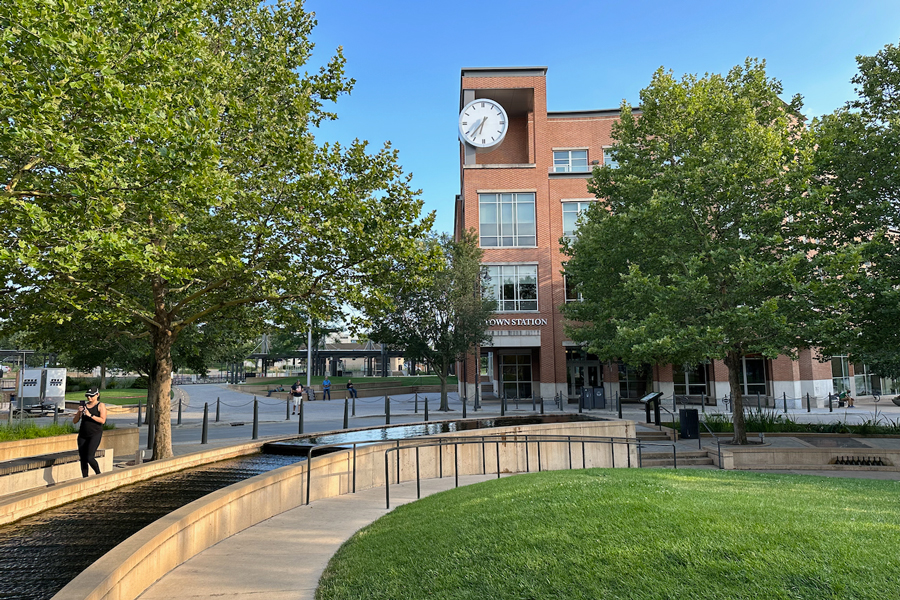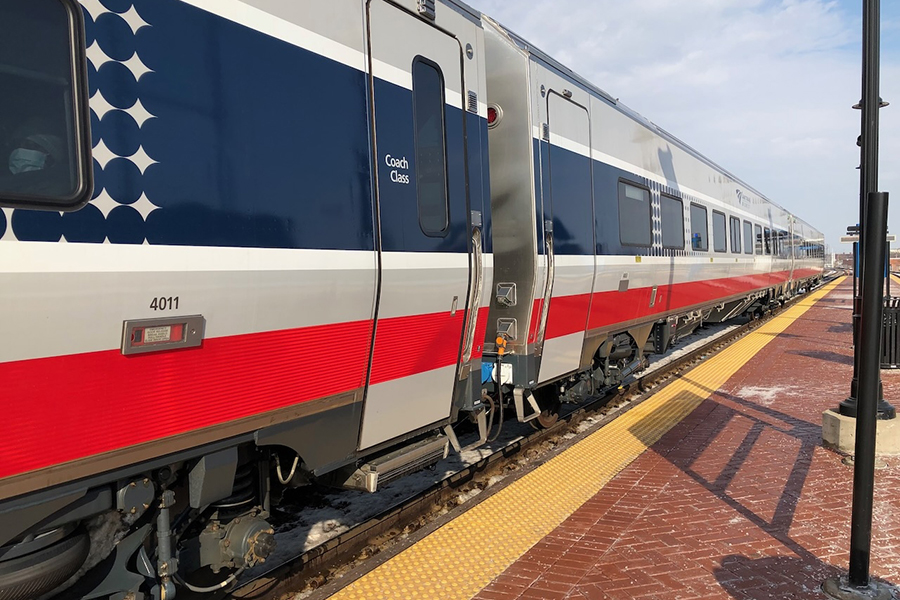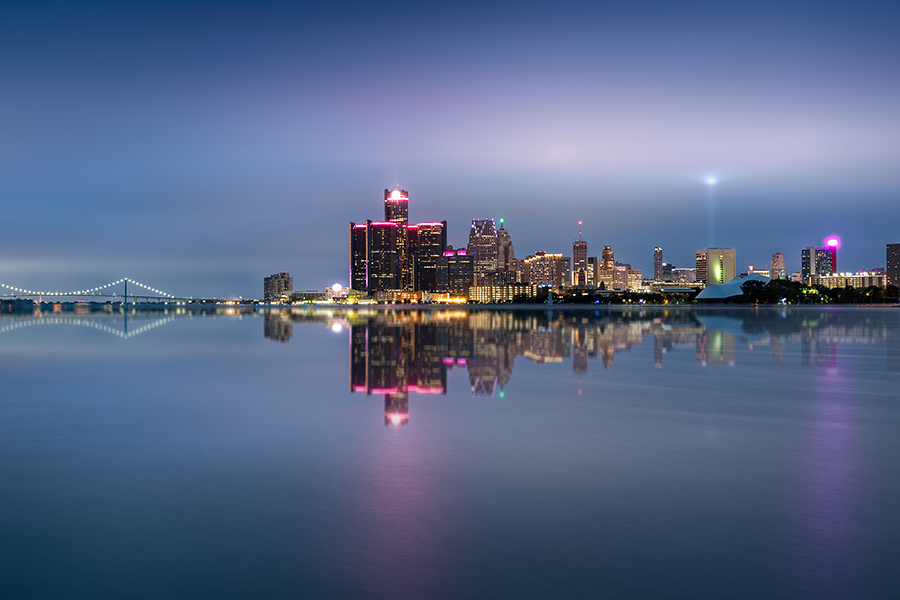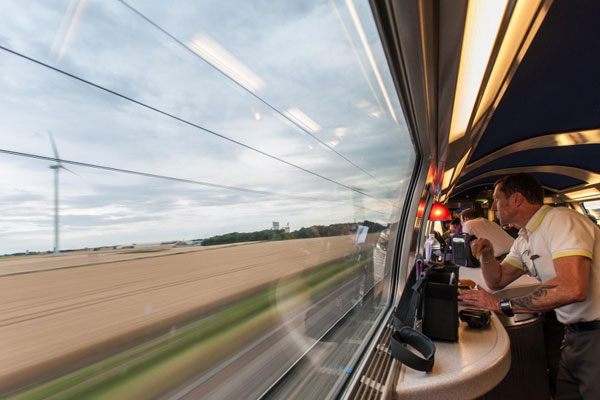(Read an introduction and part 1 of the HSRA interview with Mayor Koos here. Read the related blog post about Normal here.)
HSRA: You’ve been doing this for two decades now. What wisdom have you gained that you could pass along to people who think this is something they should look into but don’t know where to start?
Koos: Steal other people’s ideas would be a good start. But it really needs some champions in the community to carry it forward. It takes vision, and it takes tenacity. I mean, you’ve got to stick with it. We’ve been told that Normal is lucky because we were in the right place at the right time when things came together. Well, over two decades, that doesn’t play well, that explanation. I tell people every major project we’ve done down here has been very difficult. It takes ability to stay the course and keep your eye on the vision that you have for your community to get it done. And talk to other communities that have done it.
When you say lucky, you mean what?
Well, we got a hotel [the Marriott] from a developer who normally doesn’t develop in this market. We just kind of laugh when people say you’re lucky to get that. In a sense, yeah. But it also took an incredible amount of work between the council and the staff of the town of Normal, champions for this project, to make it work. The hotel project—I can’t tell you how many trips I took to talk to the developer to make sure we got the project that we had in mind. There were a couple of times they wanted to do something smaller and lesser. And, you know, we just had to keep working and say, this is what we want.
We identified what we wanted for the community, what we think is going to work. And it’s interesting. Shortly after the hotel opened, the developer of that hotel said, I made a mistake, I should have put two more floors on it.
A variation on the idea that you were lucky is that you do have Illinois State University down the road, with lots of students who either go to Chicago for weekend trips or their parents come here. I mean, that must make a big difference?
It was a big part of our decision making. You know, this business district was—it was old, it was tired, the buildings were not very good quality. It was a good place to incubate your business, but two things would happen if you did build a business down here. One, you’d go out of business. Or, two, you’d be successful and need a different location.
And what it has done is really create a unique sense of place. And people love coming down here. The roundabout circle here, Uptown Circle, is like a magnet for people. They love that we have a bike trail nearby. Families will come down here for a night of music on the circle, or just come down, grab an ice cream with their kids, and go sit in the circle. We’ve created a unique sense of place, and that’s really the magnet. And ISU is certainly a part of that.
You said to get this done, it takes tenacity and it takes champions. Do you have a sense of where those champions are most likely to come from? Is it the business community, political leaders, civic leaders?
Yeah, it can come from the civic leadership.
Early on, we had one local businessman, a very successful businessman, who was a strong champion for the concept. And he was killed in a plane crash, so we lost him pretty early. But the tipping point was, some of the projects we’d done—people could see what we were trying to do here, and we got some community leaders to really support what we were doing.
This is the mid-2000s?
The 2000s, yeah. The Children’s Discovery Museum was a private entity, and they were struggling. We had heard that the museum people were looking for new space, and we thought, you know, what a match for us. It’s oriented towards children, and ISU specializes in education. They saw that as a huge benefit for getting volunteers and interns to work in the museum, which has proven to be very much so.
So we made an arrangement with them to bring them in-house, to our Parks and Recreation Department, and we built that building to house them and showcase what our vision for the community was. And it made a big difference.
It sounds like one thing you’re saying is: Build on your strengths.
Absolutely. And every community’s got a strength. You know, there’s been a trend where people embrace areas that are not car-centric. And to take downtown and make it a more pedestrian, walkable environment was a major part of what we were trying to accomplish. We widened the sidewalks, and we reoriented the streets a little bit. But the focus was on the pedestrian, and it’s made a huge difference.
Your business is a bike shop, right?
Right. Bikes and running.
So you’re oriented toward that.
Yeah. I get called on that all the time.
For owning a bike shop?
Oh yeah. They say, ‘Well you want to sell bikes.’ I always say, ‘Well, if I own a car dealership, should I not do road improvements?’
Could you say something about your vision going forward?
We want this to be a vital community. We want a little bit of something for everyone who wants to live here. And we’re very much a welcoming community. We have a long history of that.
The founder of this community founded it with that vision—that it would be a welcoming community centered on education and quality of life. So I think, just a well-rounded quality of life. And when you ask people in this community why they live here, probably the overarching response is that it’s an easy place to live.
We talked about how it took a lot of work and tenacity to get this done. And it wasn’t just luck. It was a lot of work and meetings. And that might sound daunting to local leaders who are interested. So, what do you see as the payoff for the hard work?
You know, it’s like a line I developed when I first started running for office. And that is, great communities don’t just happen. People that developed those communities did a lot of hard work to make them unique and special and attractive. And it doesn’t just happen randomly. It takes that kind of commitment. If you’re older, you want to leave, not a legacy necessarily, but a better place for the next generation.
What have you’ve learned in terms of a dealing with state leadership and the federal government that you can share?
Take the time to develop the relationships with with your state and federal elected officials. I mean, a lot of what we did, we couldn’t have done without them. And that includes your state Department of Transportation. Developing those relationships is key to making it happen. Have a good plan, and be able to explain that plan to your state and federal people.
I’d say at the local level, probably the most important lesson we learned is: Don’t get too far out in front of your public. Give them time to digest what you’re doing. You know, you’re always going to have people that say, ‘Don’t do anything.’ You’re always going to have them. But there were a lot of people that, once this became a real thing, were just ecstatic about it and and thrilled that we did it. But they need time. When you’re doing something transformative like that, they need time to understand it. And it’s your job to give them that time and explain to them what you’re trying to do.
In terms of dealing with the state Department of Transportation, what does the relationship building facilitate? Is it the funding or help with navigating the regulations?
Both funding and regulations. We’ve gotten a lot of funding. My city engineer, who became the project manager for this area, had actually worked for IDOT before. So we always said he spoke IDOT. And he knew how to talk to IDOT to make things happen. And again, it’s about just developing those relationships and having a good plan. IDOT saw it. They said, ‘This is a fantastic plan. Yeah, we’d like to help.’ But sometimes they get stuck in their ways, and it’s just about working with them and explaining.
And what’s the actual mechanism for cultivating the relationship?
We often had meetings and we hosted meetings for, it’s called Bureau of Railroads in Illinois. We would host their meetings. They’d come here in this station right after we built it. And actually, they came before we built it. So they got to see firsthand the process of it developing from planning to completion. Talking to them, scheduling meetings—I can’t tell you how many meetings we scheduled. And a staff that was unified behind the vision is really crucial.
And your local or your state and federal elected officials, it’s crucial to develop those connections. You know, from the House side at the federal level, we had bipartisan support. And the Senate—we had bipartisan support. They were in lockstep on this project, which is unusual in today’s world. I found that support for passenger rail tends to be bipartisan.
I just tell people, ‘Don’t be afraid to try.’ And, you know, start from your unique specialty or what’s unique about your community, and what you’re proud of about your community.
There’s your starting point.
Read part 1 of this interview here, or the related blog post about Normal here.
Learn More
The Chicago - St. Louis Corridor
The Chicago – St. Louis Corridor Project is paying big dividends.
The Chicago – Detroit Wolverine Corridor
The Michigan Department of Transportation (MDOT) is taking slow and steady steps towards modern service. Expediting the work, with a goal of hourly departures, would create vital links among some of the state’s most vibrant cities.
Illinois needs an integrated rail plan
There is a golden opportunity to restore Michigan Central as a working train station—and turn Detroit into the heart of a hotbed of high-tech innovation.




